Abstract
The clinical features of 12 patients with spasmodic dysphonia are described. In 11 patients, the voice was strained, harsh, tight, and tremulous, and was low in volume and pitch. Speech, which was sometimes barely intelligible, was interrupted by irregular stoppages and catches of the voice; it required considerable effort, and was accompanied by facial grimacing. The dysphonia was part of a more widespread neurological disorder (idiopathic torsion dystonia) in one case, while it coexisted with blepharospasm in another, and with postural tremor in two. There was a buccolingual hyskinesia in another of these 11 patients, but this may have been related to her previous drug regime. In the twelfth patient, who had a familial tremor, the voice was characterised by marked breathiness, with intermittent aphonia. The disorder is probably due to a focal dystonia of the laryngeal musculature, and this would be consistent with the type of neurological disorders that were associated with it in our cases. Symptomatic benefit follows the therapeutic division of one of the recurrent laryngeal nerves, in selected cases.
Full text
PDF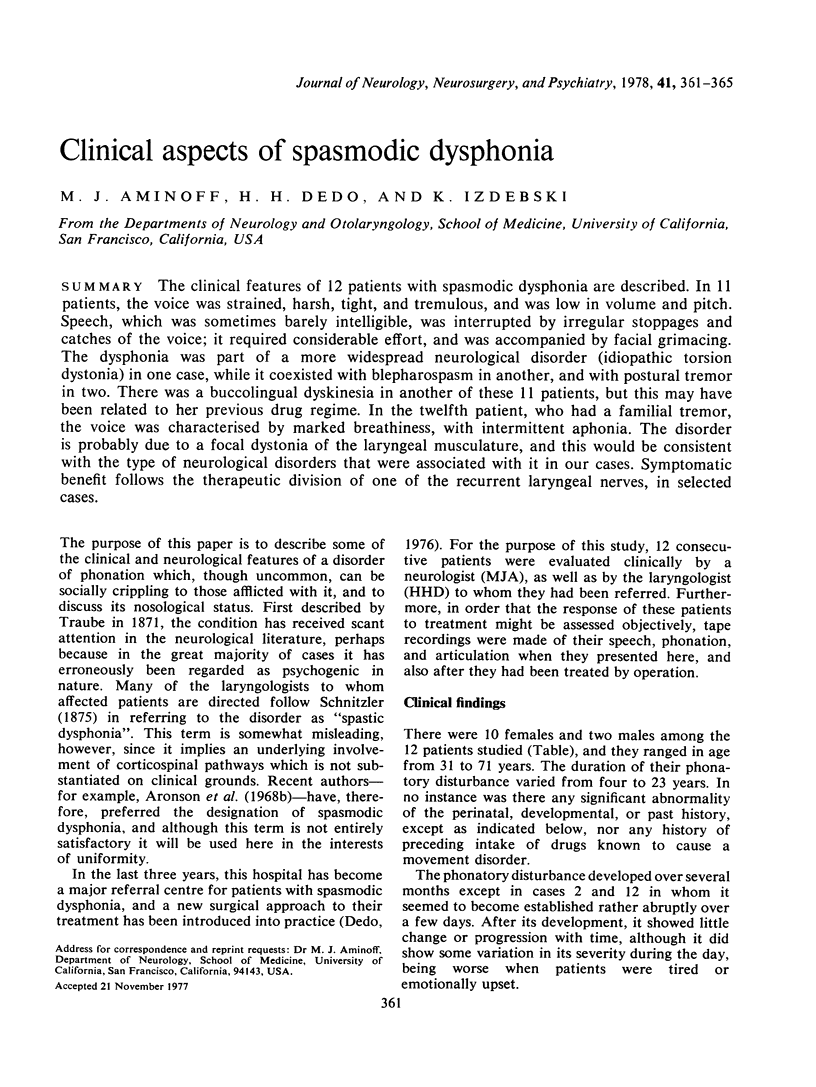
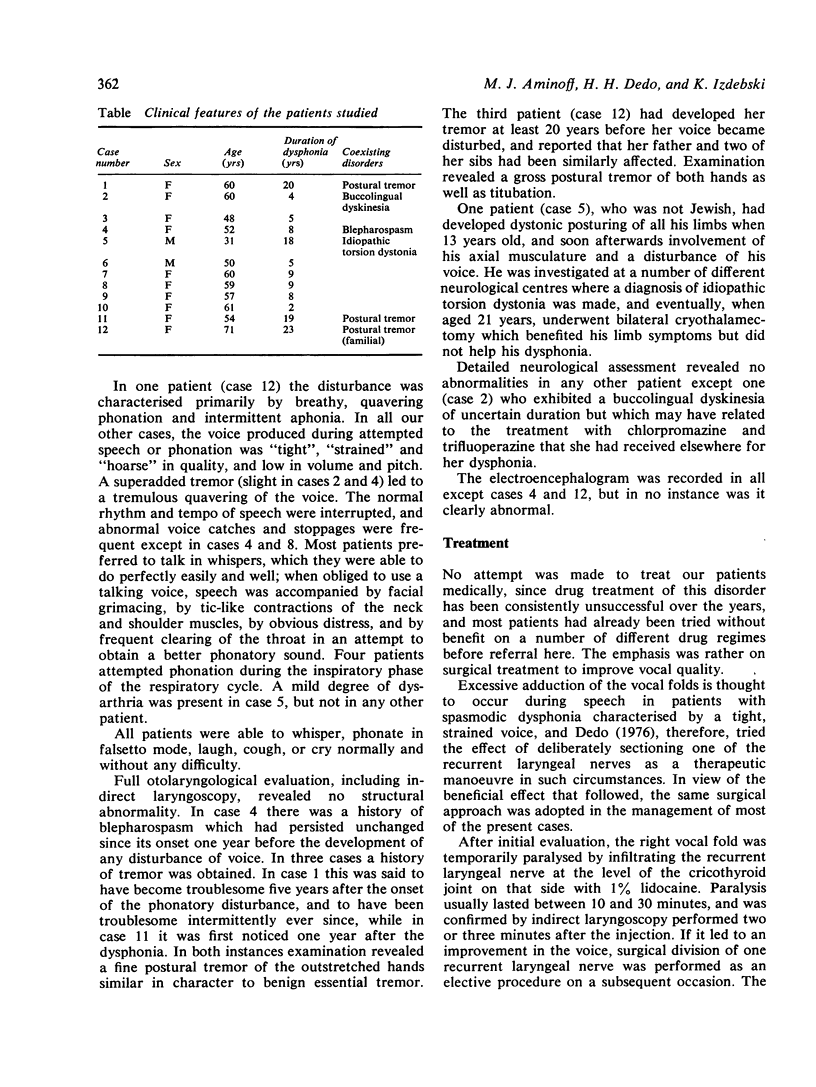
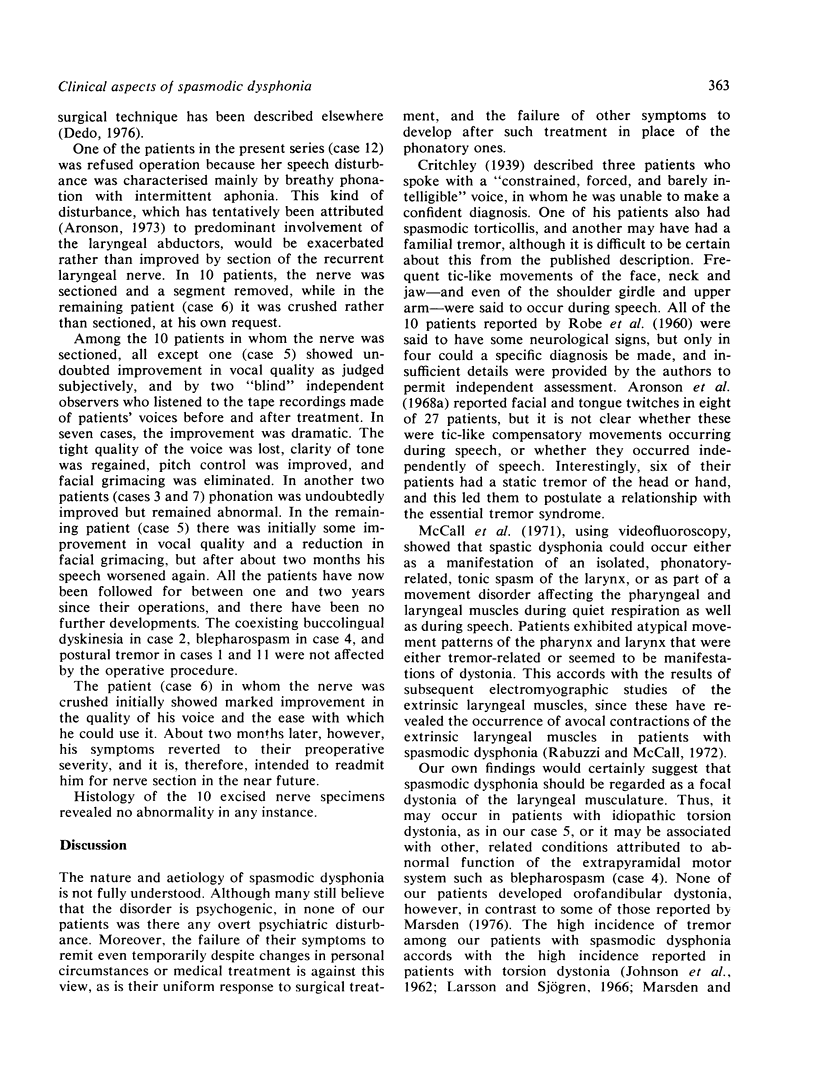
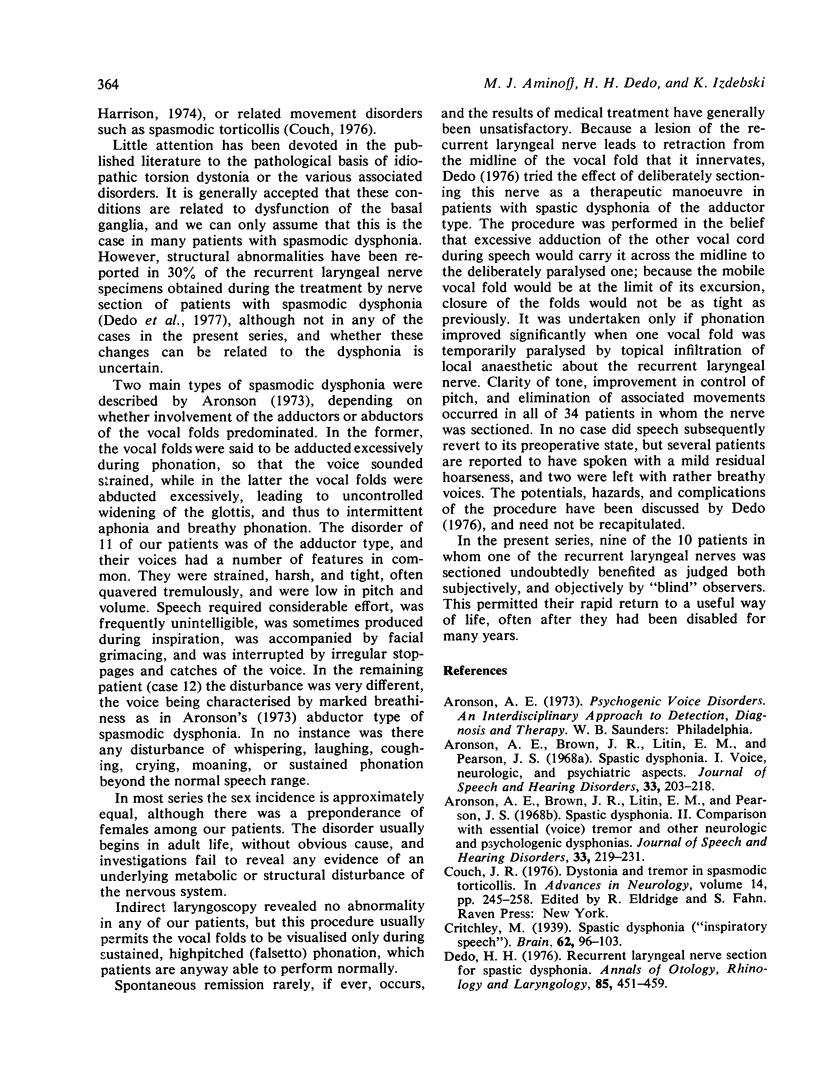
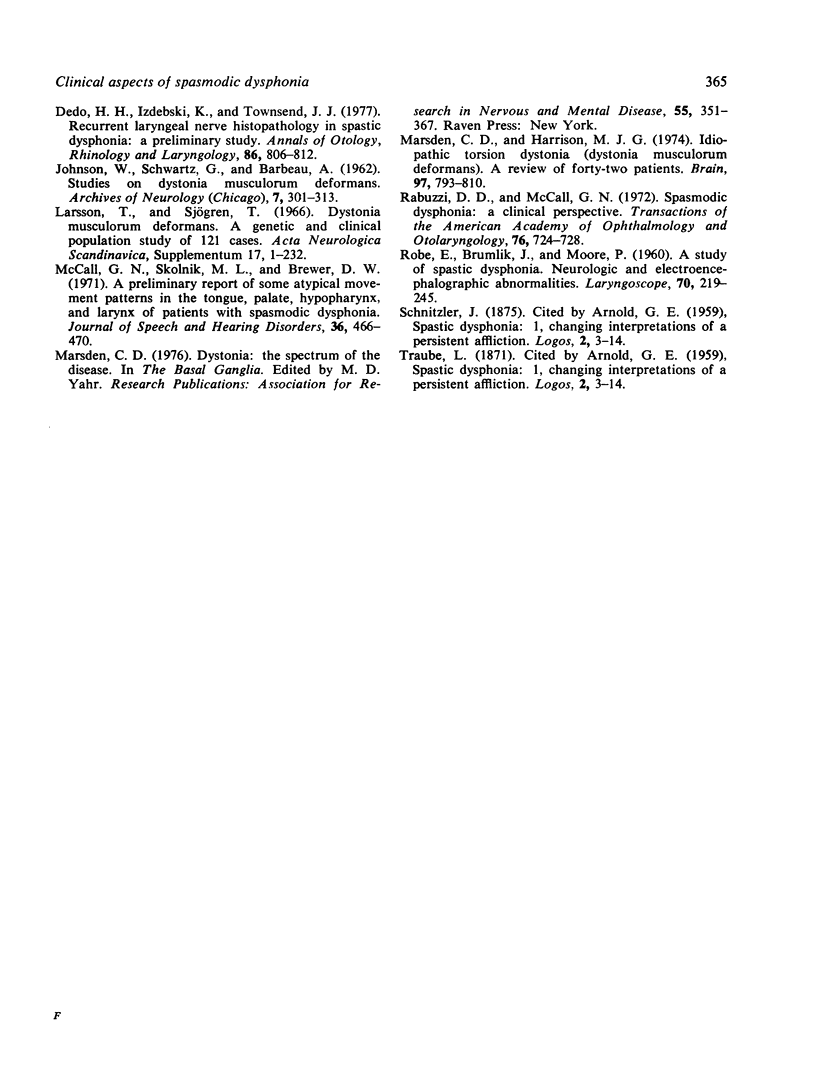
Selected References
These references are in PubMed. This may not be the complete list of references from this article.
- Aronson A. E., Brown J. R., Litin E. M., Pearson J. S. Spastic dysphonia. I. Voice, neurologic, and psychiatric aspects. J Speech Hear Disord. 1968 Aug;33(3):203–218. doi: 10.1044/jshd.3303.203. [DOI] [PubMed] [Google Scholar]
- Aronson A. E., Brown J. R., Litin E. M., Pearson J. S. Spastic dysphonia. II. Comparison with essential (voice) tremor and other neurologic and psychogenic dysphonias. J Speech Hear Disord. 1968 Aug;33(3):219–231. doi: 10.1044/jshd.3303.219. [DOI] [PubMed] [Google Scholar]
- Couch J. R. Dystonia and tremor in spasmodic torticollis. Adv Neurol. 1976;14:245–258. [PubMed] [Google Scholar]
- Dedo H. H., Izdebski K., Townsend J. J. Recurrent laryngeal nerve histopathology in spastic dysphonia: a preliminary study. Ann Otol Rhinol Laryngol. 1977 Nov-Dec;86(6 Pt 1):806–812. doi: 10.1177/000348947708600616. [DOI] [PubMed] [Google Scholar]
- Dedo H. H. Recurrent laryngeal nerve section for spastic dysphonia. Ann Otol Rhinol Laryngol. 1976 Jul-Aug;85(4 Pt 1):451–459. doi: 10.1177/000348947608500405. [DOI] [PubMed] [Google Scholar]
- Marsden C. D., Harrison M. J. Idiopathic torsion dystonia (dystonia musculorum deformans). A review of forty-two patients. Brain. 1974 Dec;97(4):793–810. doi: 10.1093/brain/97.1.793. [DOI] [PubMed] [Google Scholar]
- McCall G. N., Skolnick M. L., Brewer D. W. A preliminary report of some atypical movement patterns in the tongue, palate, hypopharynx, and larynx of patients with spasmodic dysphonia. J Speech Hear Disord. 1971 Nov;36(4):466–475. doi: 10.1044/jshd.3604.466. [DOI] [PubMed] [Google Scholar]
- ROBE E., BRUMLIK J., MOORE P. A study of spastic dysphonia. Neurologic and electroencephalographic abnormalities. Laryngoscope. 1960 Mar;70:219–245. doi: 10.1288/00005537-196003000-00001. [DOI] [PubMed] [Google Scholar]
- Rabuzzi D. D., McCall G. N. Spasmodic dysphonia: a clinical perspective. Trans Am Acad Ophthalmol Otolaryngol. 1972 May-Jun;76(3):724–728. [PubMed] [Google Scholar]


